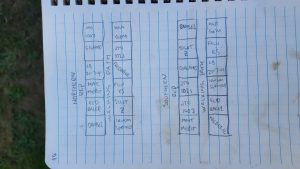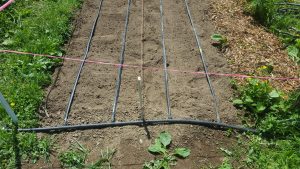What a beautiful and productive day for the tomatoes, as well as the whole SURF project community as a whole.
I got an opportunity to meet with a majority of the other SURF fellows and faculty, while being introduced to the various projects that are being carried out this summer. I look forward to following the work of the other students and perhaps getting a chance to collaborate with them in the near future. At the meeting we agreed to try and meet once or twice a month to ask questions, receive answers, and stay in touch. I think it would be quite valuable to make and keep connections between the fellow students and faculty we will meet this summer.
At the tomato plot, I spent a good long time with each of the plants, observing them for signs of environmental or pest stresses. I observed that approx. 8 of 10 plants show signs of minor Flea Beetle damage, but the damage is isolated to the older leaves of the plants. My thought on this is that when the plants went into the ground and experienced a bit transplant shock, they were made vulnerable to some pest pressure. Now that the plants have settled in and are growing new leaves, the new growth is healthy enough to protect themselves from the Flea Beetle.
You may now notice that in the drop down menu, under the image gallery, there is a new set of menus titled: Varietal Progression. Here I plan to post a weekly photo of a representative plant of each variety; my hopes are that this will help show the life cycle of a plant from each variety, and give some aid to envisioning the growth habits of the plants.
My summer term for The Practice of Organic Farming starts tomorrow, so it’s needless to say that, if you need to find me, I will most likely be at the Evergreen Farm. Come say hi.




